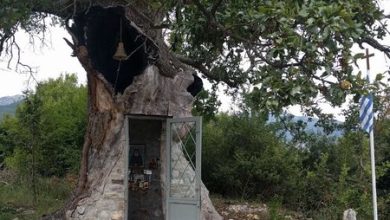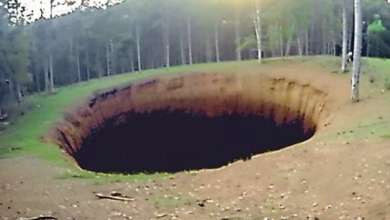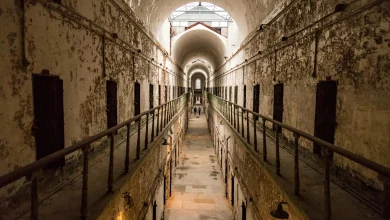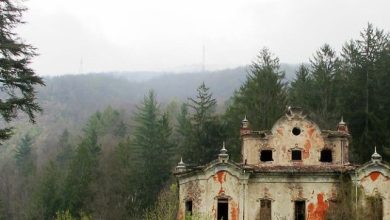Italy’s Iconic Valley of the Mills.
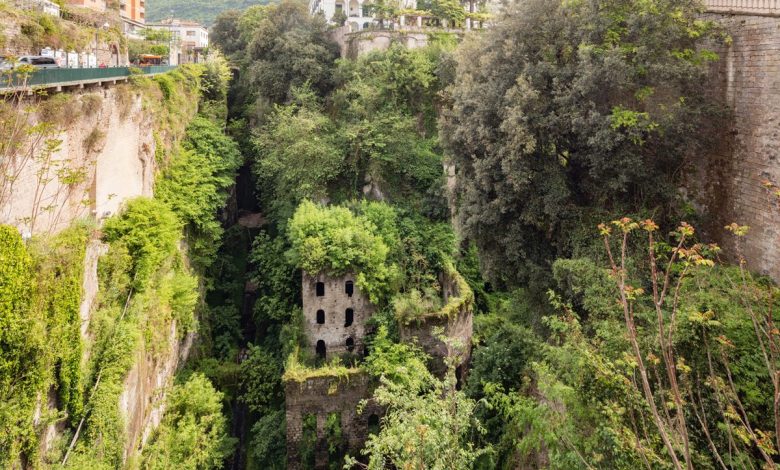
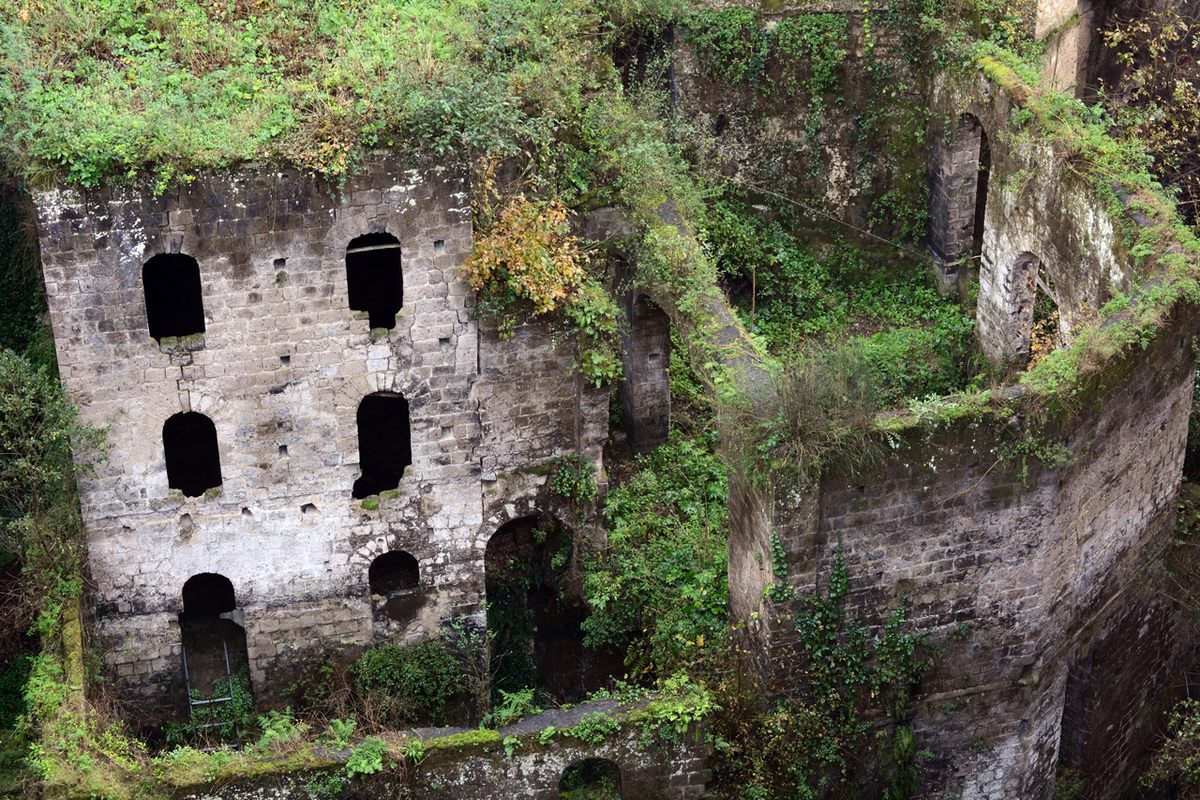
For a few years, the new owners of the mill left the property untouched. But in 2019, a restoration plan was announced. Many observers in Sorrento and visitors from around the world, including Van de Velde, had hoped the restoration work would focus on preventing the ruin from collapsing. But the owners had a different idea in mind.
In March 2019, workers opened a path from the top of the gorge all the way down to the valley floor. Mini excavators were used to remove vegetation and clear the area around the abandoned building. Scaffolding went up, and when it was eventually removed, photos of the refurbished mill started to circulate online.
“I could not believe that it was the same building” Van de Velde says. “They removed all ferns, all moss, all vegetation was gone.”
One of the defining characteristics of the ruin was the way light filtered through its open windows, playing with leaves and shadow to add to the overall visual impact and sense of mystery. “Now, they put in modern windows and even ventilation systems” Van de Velde says. “It’s just not what I expected when I heard they were restoring it.”
He was not the only one who was profoundly disappointed. Mario Russo, an archaeologist who has worked on many sites in the Sorrentine Peninsula, says that owners should have opted for a “conservative” restoration. “The mill should have remained a ruin,” he says, “They should have prevented crumbling with as little changes as possible.”
Currently, the mill is in a transitional state. The overgrown vegetation is gone, the centuries-old volcanic tuff roof remade with cement. But it is not yet a fully functional refurbished building.
The restoration work also affected the delicate ecosystem of the valley. Vegetation has been cut back, including holly oaks that were removed to make way for excavators. “This will highly increase the risk of landslide,” D’Esposito says, as the trees played a vital role in stabilizing the soil and absorbing rainfall during storms.

After gathering evidence of the environmental impact of the project, the WWF filed a lawsuit against Maccheronificio S.r.l. But by mid-March 2020, the pandemic came down on Italy like a hammer. It wasn’t until May that local authorities visited the site. After a quick inspection, they decided to put it under seizure and freeze all work at the site to run a investigation. “Restoration works have been conducted against local landscape protection laws,” prosecutors told national newspaper La Repubblica, adding that project documents failed to clearly explain the final goal of the restoration project.
As of March 2021, investigations are ongoing. The owner of the mill, Pontecorvo, believes that prosecutors will not find any wrongdoing. “We did not cut down any trees,” he says. “All we did was to remove infesting plants.” However, in photos shared by the WWF, the removal of a range of vegetation is evident. “They cut down many plants, including hornbeams, ash trees, and ferns,” D’Esposito says, “which poses a real risk to the many species that depend on those trees.”
Prosecutors also assert that the restoration works violated local heritage protection laws. However, the project had been approved by the local Soprindenteza, the government body tasked with monitoring projects that impact the country’s cultural patrimony. “When local supervisors approve a project it can be hard to block it further down the road,” Russo says. The real question, he says, is why it was approved in the first place.
Whatever the outcome of the investigation, the future of the Valley of the Mills has shifted, and where it goes will largely depend on which vision of “conservation” prevails. To the WWF and other environmental groups, the valley should remain untouched, save for minor interventions to prevent the collapse of the old mill. “This is the only place of Sorrento untouched by urbanization,” D’Esposito says, “It’s like a window on our geological past and it should be kept that way.”
According to Pontecorvo, the building should be a functioning mill once again, open to tourists (for a fee) and free for locals. “We want to reactivate the mill’s blade,” he explains, “and create a footpath that leads people down to the mill.”

Of course, this proposition runs counter to the conditions that made this place stand out to countless artists and visitors for centuries, the otherworldly atmosphere that seemed to exist outside the flow of time itself, the way the human-made merged with ferns and moss, light and shadow. And there’s no guarantee that redevelopment of the mill will make the site any more appealing to visitors or locals. “Recreating a functional mill will inevitably mean losing the unique charm of this place,” Russo says, “and I doubt that it would be easy to bring people inside the building given its humidity.”
Berrino, who has curated a digital archive about artistic and historical records of the valley, believes that the mill could be open to the public, but without putting the surrounding ecosystem at risk. “I have proposed something like a suspended bridge,” says D’Esposito, who is also not opposed to finding a sustainable way for visitors to take a closer look at the ruin.
For now, the building remains in private hands, but the recently elected mayor of Sorrento, Massimo Coppola, believes that his government can put pressure on the owners to preserve its identity somehow. “We will fight to prevent further modifications to the mill,” he says, “and for the unique character of the place to be preserved.”
Tourism experts such as Coppola believe that fans from around the world could play a big role in what happens next. “If enough people will advocate for a conservative restoration, stakeholders will pay attention,” she says, citing the example of Poveglia, an island near Venice that was put up for sale in 2014 and was eventually declared a public good and preserved after a petition was signed by more than 4,000 people. “Tourism can be a precious resource, as long as it does not put at risk the authenticity of this place.”
